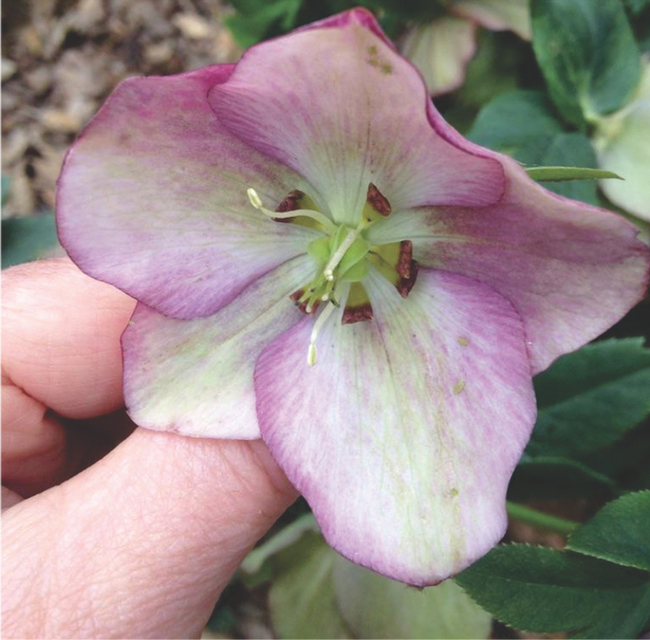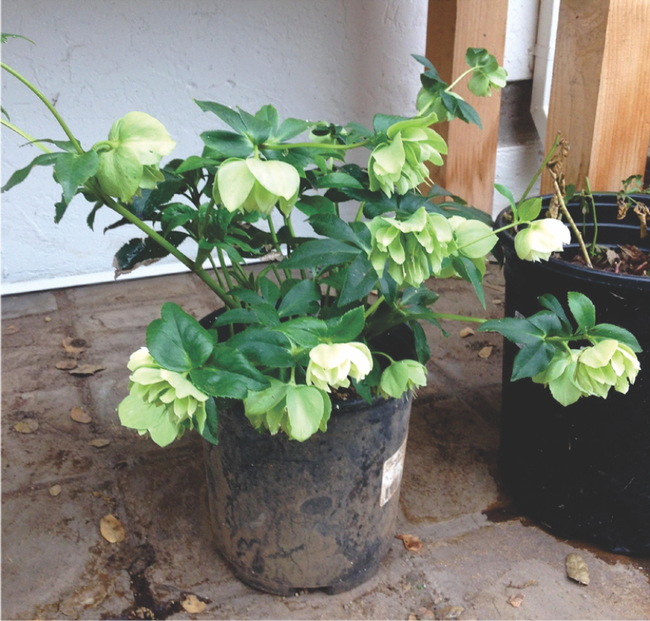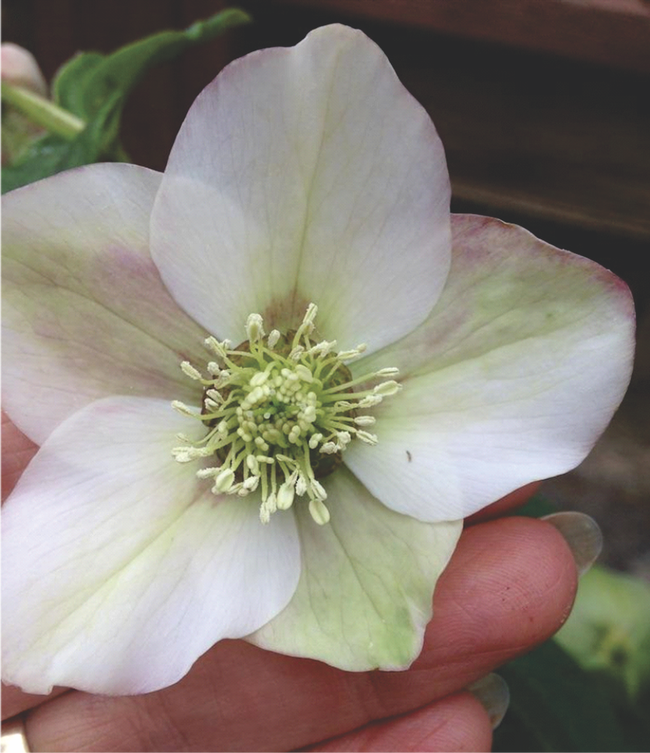By Linda McClimans
Helleborus-Hellebores (perennial members of the Ranunculaceae family)

While native to Eurasia, they were first grown for their medicinal and homeopathic properties and even for their use in witchcraft. Today, all those uses have been discarded. All parts of the plant are toxic which makes them mostly protected from deer, gophers, voles and moles.


The UC Davis Arboretum All Stars list contains Corsican hellebore (Helleborus argutifolius) which has pale green flowers and the Lenten rose (Helleborus x hybridus) as easy to grow and drought tolerant. Available on Youtube from February 9, 2015, is a 7 minute teachable video from Taylor Lewis, Nursery Manager at the UC Davis Arboretum Teaching Nursery, that includes many hellebore hybrids the nursery grows and sells.
I do not know the specific varieties of the attached few pictures of hellebores in my garden. Although they are generally pest free, I am having trouble with white flies and aphids on the plants. They have been in bloom since early February and are still going strong. Late last fall, I transplanted several from a friend's garden and they seem to be doing well, making new leaves and some look like want to flower. I have been cutting off the buds as I think their energy should go toward rooting and growing leaves.
Informational Links:
UC Davis arboretum-
Corsican Hellebore https://arboretum.ucdavis.edu/plant/Corsican-hellebore
YouTube video-Lenten Rose 2015 https://www.youtube.com/watch?v=Q4hbtI0H-PE
UC Master Gardeners Sonoma County - Hellebores-general info http://sonomamg.ucanr.edu/Plant_of_the_Month/Helleborus/
Hellebores by Ellyn Palikan Sept 2019 http://sonomamg.ucanr.edu/Plant_of_the_Month/Hellebores/
During Napa County's shelter in place directive that protects everyone's health and safety, Napa Master Gardeners are available to answer garden questions by email: mastergardeners@countyofnapa.org. or phone at 707-253-4143. Volunteers will get back to you after they research answers to your questions.
Visit our website: napamg.ucanr.edu to find answers to all of your horticultural questions.
Photo credits: Linda McClimans